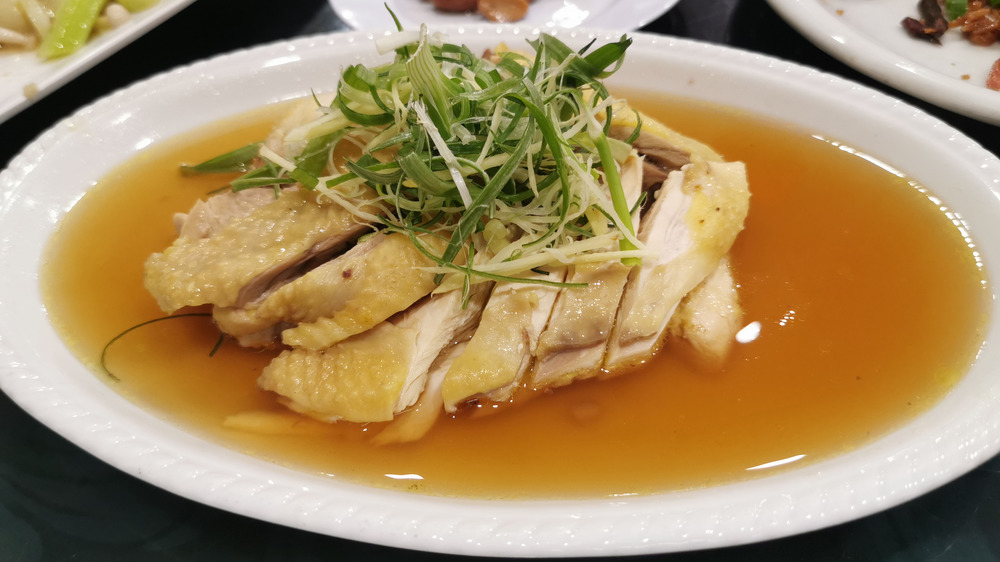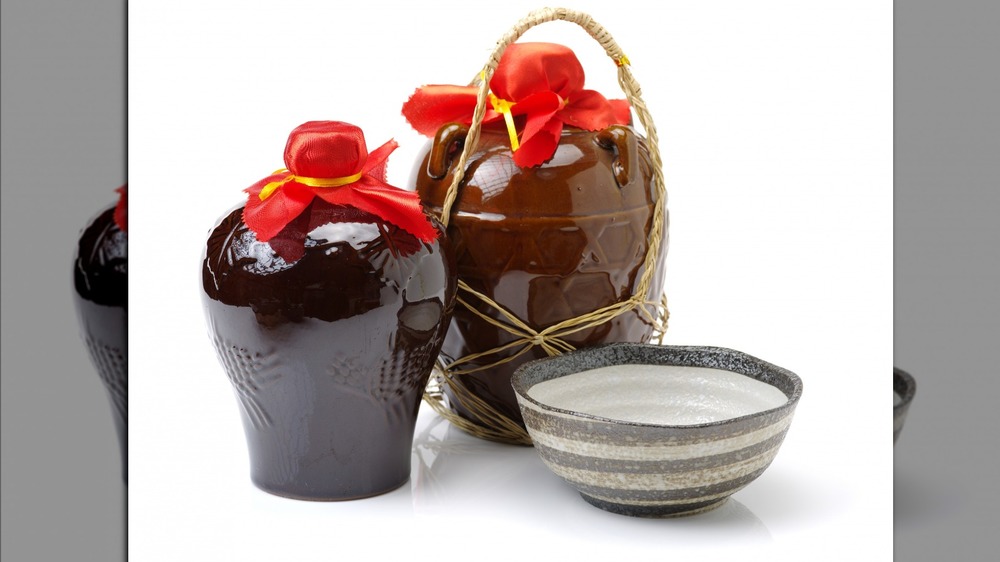You Probably Shouldn't Drink This Type Of Shaoxing Wine. Here's Why
You might have never really known much about Shaoxing wine before, but if you are a Chinese food fan, you have almost certainly eaten something that was cooked with this ingredient. Recipe Tin Eats says Shaoxing, or Chinese cooking wine, has been used in just about every soup and stir fry you have ever had. The spirit is so common, in fact, that it often sits alongside soy sauce in many Chinese kitchens. A little goes a long way when you are cooking with Shaoxing wine, too — usually a glug or two is enough to take your dish where it needs to go.
Mala Food says cooking wine can be used not only to enhance the flavor of food, but it also works to hide undesirable tastes which can accompany seafood and meats, and it is a key ingredient in popular dishes, like drunken chicken. Shaoxing wine is not just labelled as such in supermarkets, however. Depending on where it is made, it can be called "mijiu," too.
This ingredient makes cooking Shaoxing wine an undesirable drink
Travel Guide China says the method for making Shaoxing wine dates back over 2,500 years. The spirit originally comes from Shaoxing, a city in the eastern Chinese province of Zhejiang, which is well known for its rice wines. To make this, manufacturers use fermented rice, water, and some wheat, like a number of soy sauce brands on the market today. This means Shaoxing wine, and whatever it is cooked with, cannot be considered gluten free (via Healthline). But when it is produced as an ingredient, Shaoxing wine also contains salt, which The Woks of Life says helps buyers and manufacturers dodge an alcohol tax, thereby allowing it to be stocked in popular supermarkets.
It is not just the addition of salt that makes cooking Shaoxing wine far from a desirable beverage, however. Cooking wine is considered to be a lower grade, and of inferior quality to rice wines that can be drunk and enjoyed. In listing the four grades of Chinese yellow wines — Yuanhong (dry), Huadiao (half-dry), Shanning (semi-sweet) and Xiangxue (sweet), Travel China Guide does not mention the type and grade of wine that might be used to manufacture the cooking wine, which likely means that its harsh, salty flavor is best enjoyed as part of a symphony of flavors instead.

